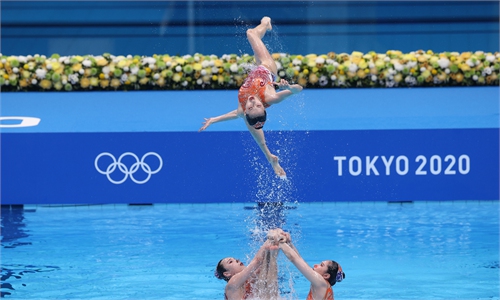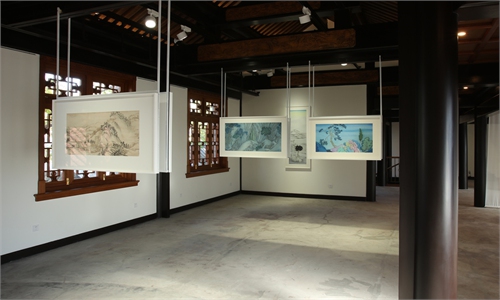ARTS / ART
Artist Xu Bing launches rocket project inspired by China’s astronautic spirit
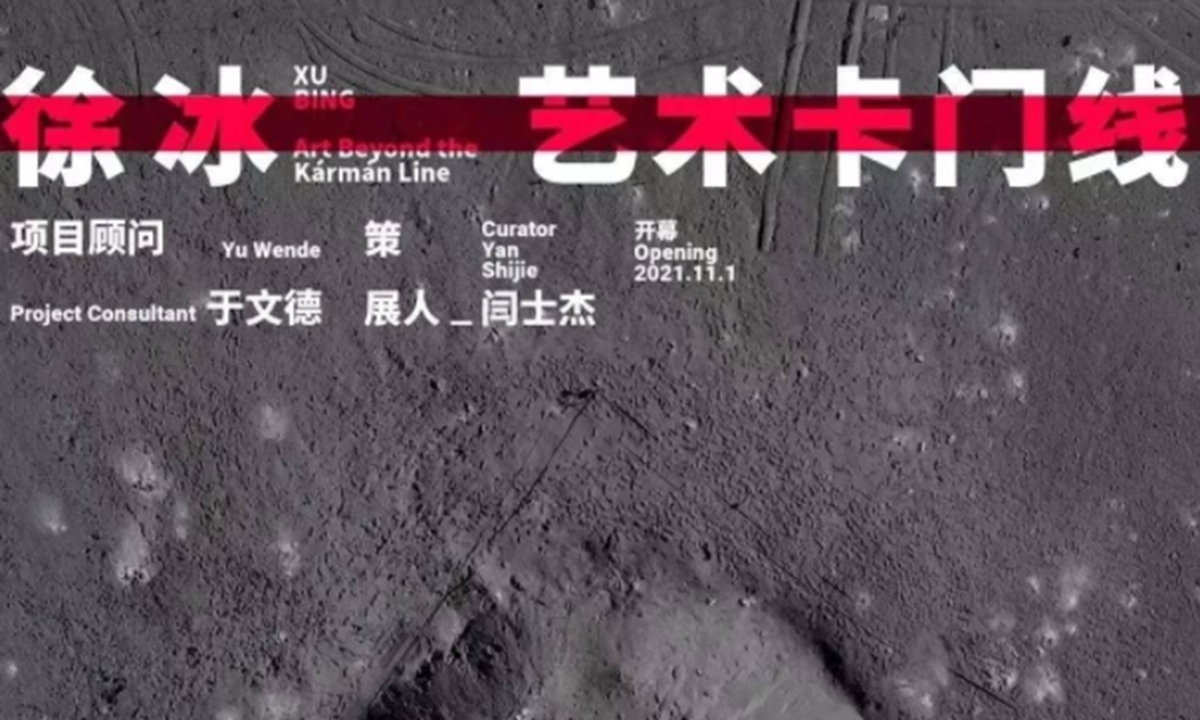
The poster of the exhibition Photo: Courtesy of the Red Brick Art Museum
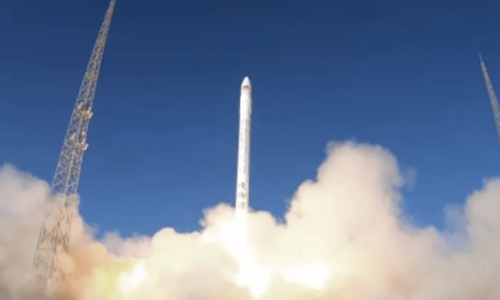
"Xu Bing Tianshu" Rocket Launching Photo: Courtesy of Xu Bing studio
An art exhibition that focuses on Chinese contemporary artist Xu Bing's ambitiously sensational project to shoot his arts into the space has launched recently in Beijing that it was inspired by the Chinese astronautic spirits and achievements.Xu's exhibition is called the Art beyond the Karman Line, which it gathers a large number of artistic materials such as the text, videos and art installations that attempts to explore the symbolism and significance of the initiative of sending the representation of human being's creativity- art- to the place of 'unknown'- the outer space.
The Karman line is a line that divides two different spatial fields of the Earth and outer space. To be 'beyond' it, is the exhibition's theme which it implies the artistic imagination is free rein from the unknown limitations.
Behind the current exhibition was a bold artistic attempt that Xu collaborated with the i-space, a privately run Chinese space rocket company launched an 'art rocket' into the space in Jiuquan, in Northwest China's Gansu early February 2021.
The design of the art rocket was influenced by Xu's most iconic art installation, the Book from the Sky that was created 30 more years ago. At that time, the art piece with book rows and hanging scrolls that written with hundreds and millions of "Chinese" characters was 'confusingly' sensational as Xu has been the first man ever to letting English spelling made sense in texts, that it looks like Chinese characters, but essentially fabricated and 'meaningless'.
"Xu has always been seeking the diversities and alterations in explaining how a "natural" concept can be understood differently. Changing how the stereotypical cultural and social assumptions of people… The 'art rocket' project too, not it is with his arts that made it an art rocket, it is the rocket symbolizes art to demand its existence in a territory that is longed but does not yet belong the to the human beings," Zhang Yi, an art researcher, told the Global Times.
Xu's 'Karman Line' project has also hugely influenced by his observations on how the fast-developing Chinese space career can redefine, and is always updating people's understanding on the limitations of human beings.
He was touched by the spirits of Chinese aerospace scientists, and the country's big achievements in its space career.
"In the two years since I started to work on the 'space art' collection, I have learned a lot from the aerospace scientists' pursuit of their spirits. They have matured through perseverance in exploration and experimentation. In fact, without the achievements of Chinese astronauts in this field, there is no space where contemporary Chinese space art can be displayed."
The highlight of the exhibition is there will be having a work called Where are we?
The exhibition is organized by Red Brick Art Museum in Beijing; it has opened to public on November 6, and is scheduled to end on April 12, 2022.
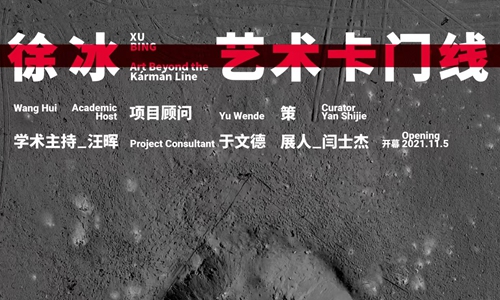
The poster of the exhibition Photo: Courtesy of the Red Brick Art Museum

"Xu Bing Tianshu" Rocket Launching Photo: Courtesy of Xu Bing studio
An art exhibition focusing on Chinese contemporary artist Xu Bing's sensational project that saw his art get launched into space kicked off on Saturday at Beijing's Red Brick Art Museum.Inspired by China's astronautic spirit and achievements, Xu's Art Beyond the Karman Line gathers a large number of artworks, including text, videos and art installations that attempt to explore the symbolism and significance of sending the results of human creativity, in other words Xu's art, into the "unknown" realm of outer space.
The Karman line is a line that defines the boundary between Earth's atmosphere and outer space. Sending art "beyond" this line implies that the artist's imagination is free from all limitations.
To send his art off-world, Xu collaborated with i-Space, a privately run Chinese space rocket company which launched an "art rocket" into space from Jiuquan in Northwest China's Gansu Province in early February.
The design of the art rocket was influenced by Xu's most iconic art installation, The Book from the Sky, which he created more than 30 years ago. The artwork featured rows of books and hanging scrolls featuring hundreds and millions of "words" that looked like Chinese characters but were essentially fabricated and meaningless.
"Xu has always been seeking diversity and alterations to explain how a natural concept can be understood differently. Changing people's stereotypical cultural and social assumptions… The 'art rocket' project too symbolizes art's existence in a territory that is longed for but does not yet belong to humanity," Zhang Yi, an art researcher, told the Global Times.
Xu's Karman Line project was also influenced by his observations on how China's rapidly developing space program can redefine people's understanding of the limitations of human beings.
He was touched by the spirits of Chinese aerospace scientists and the country's impressive achievements in space travel.
"In the two years since I started to work on the 'space art' collection, I have learned a lot from aerospace scientists' spirit. They have matured through perseverance in exploration and experimentation. In fact, without the achievements of Chinese astronauts in this field, there is no space where contemporary Chinese space art can be displayed."
The highlight of the exhibition is a work called Where are We?
The exhibition is scheduled to end on April 12.
